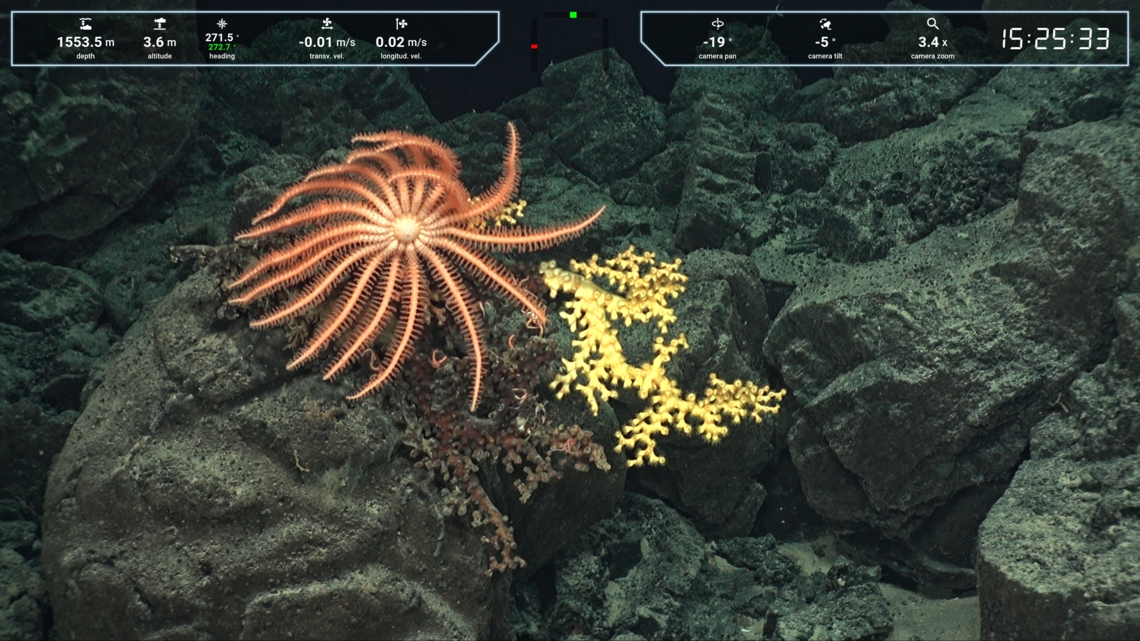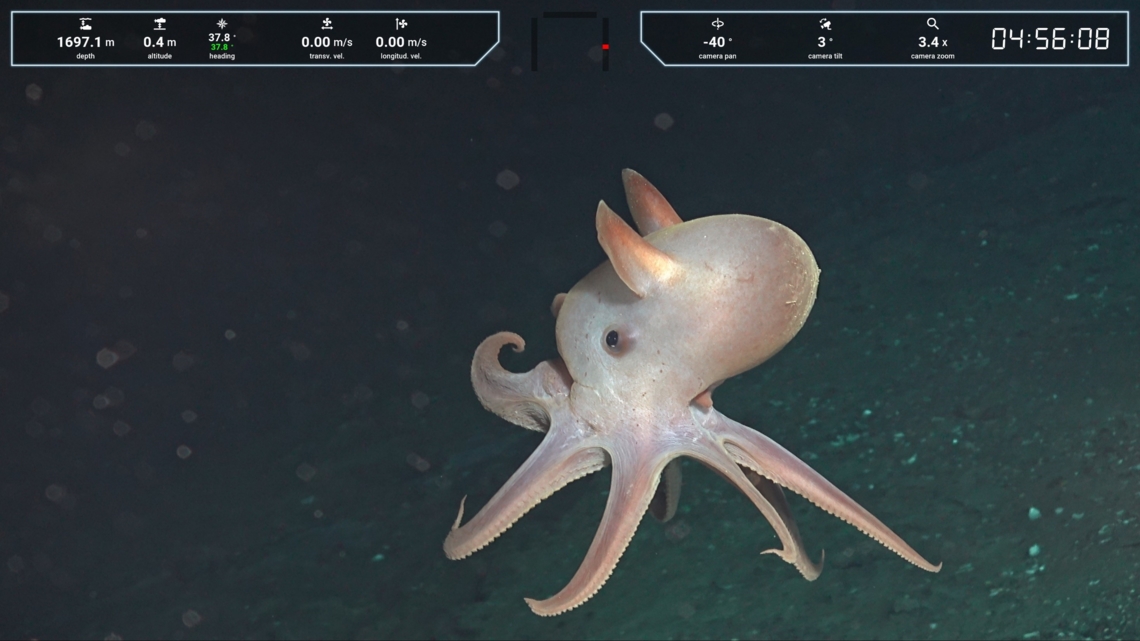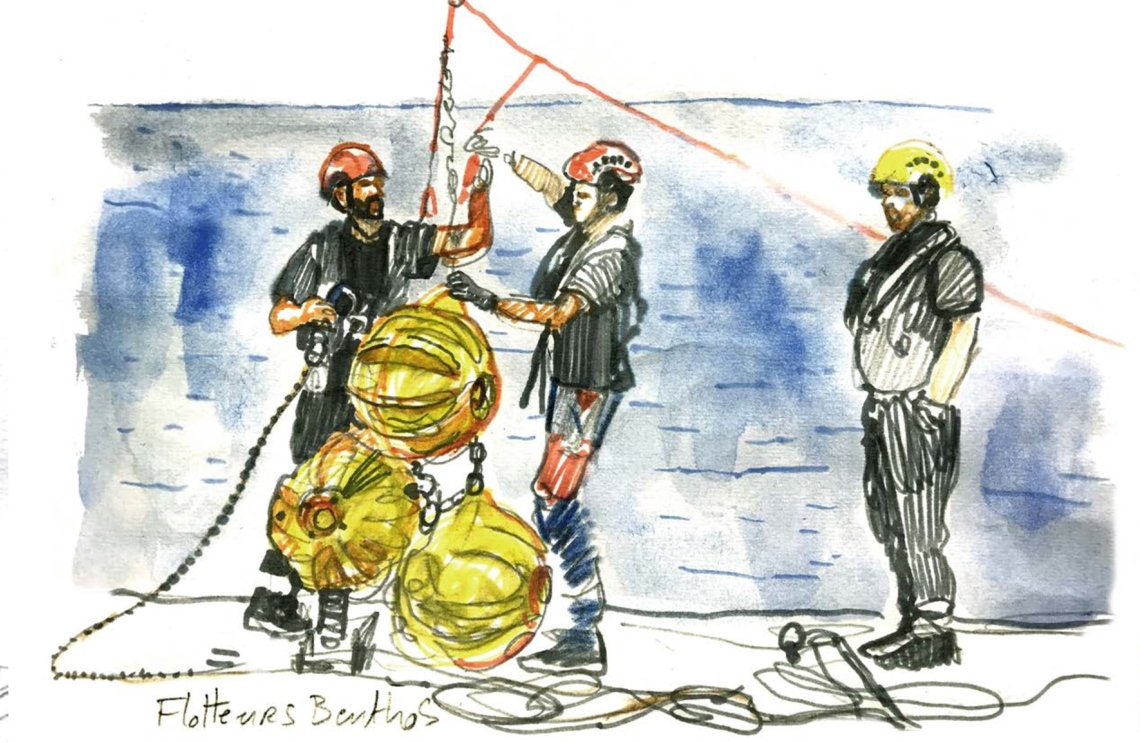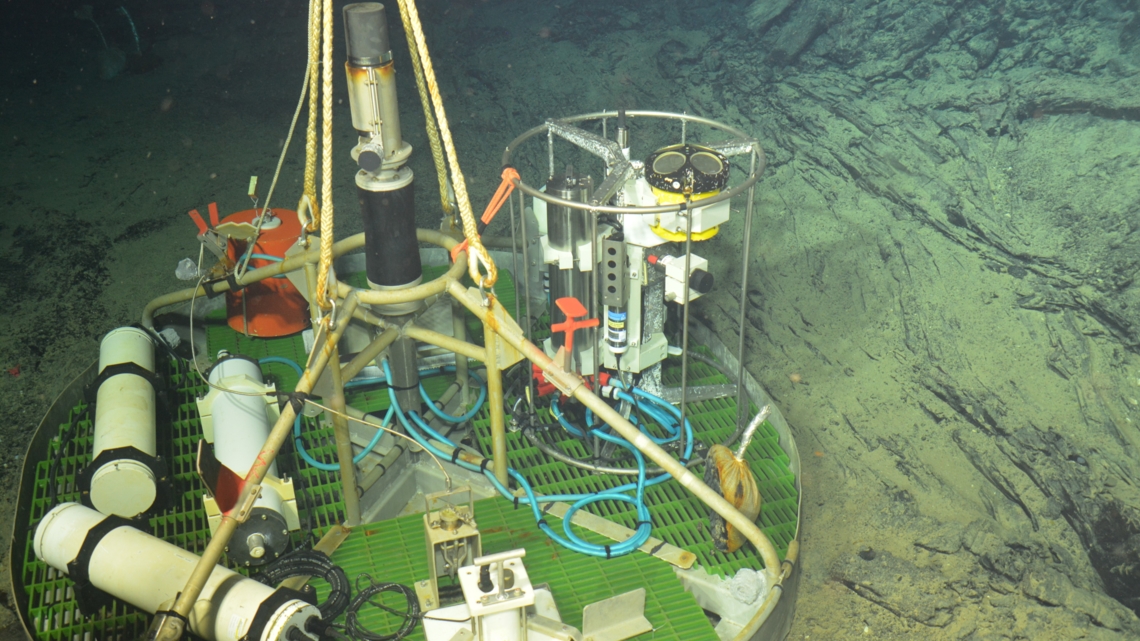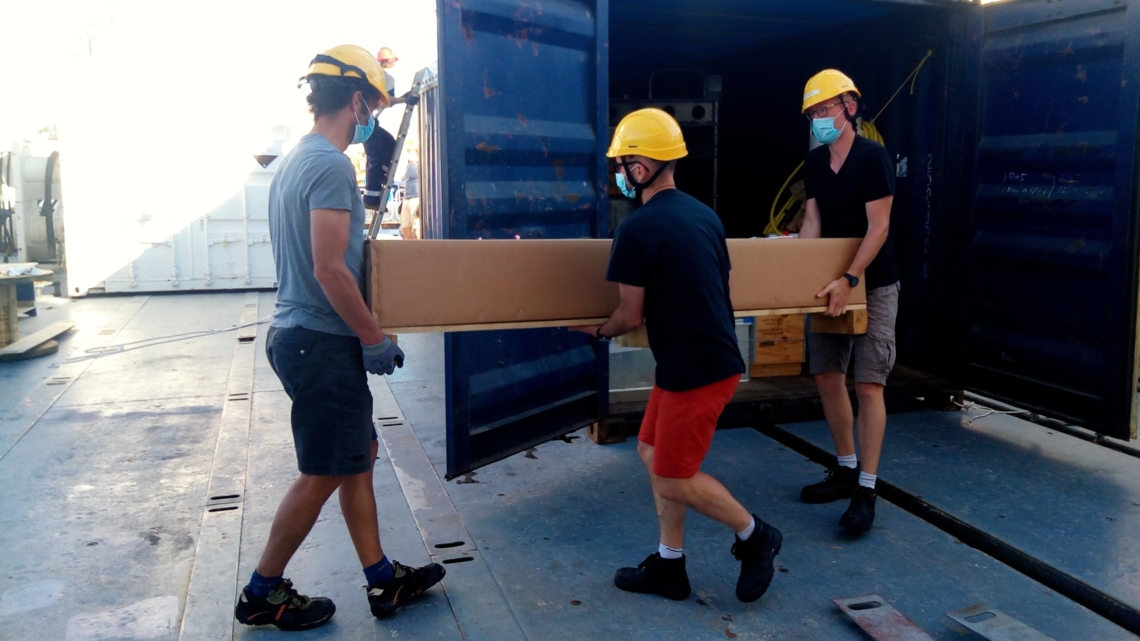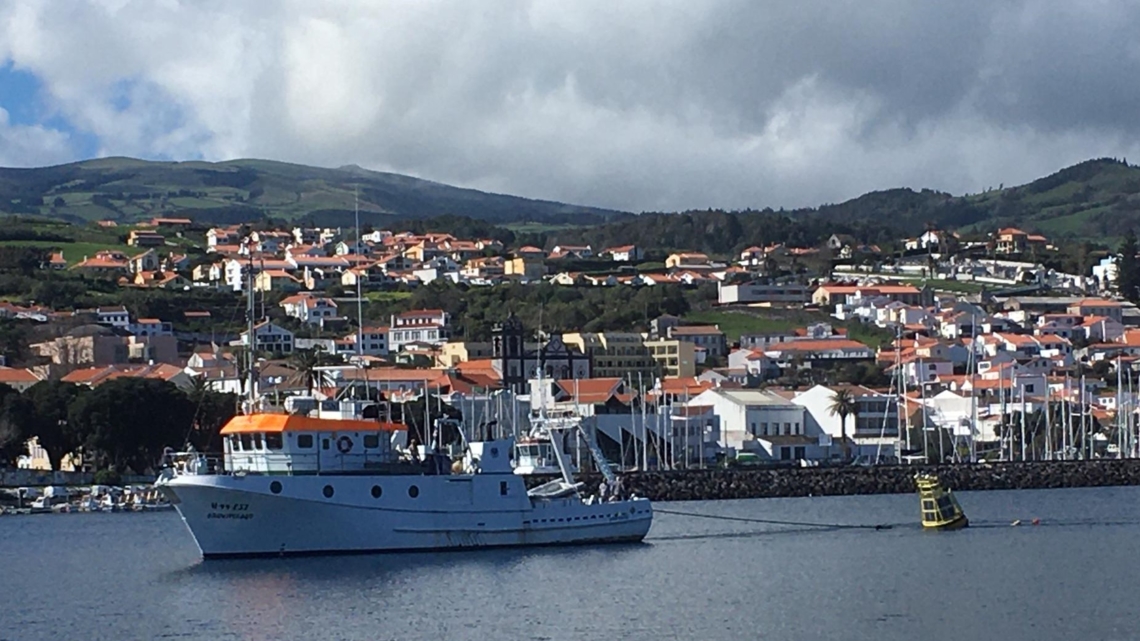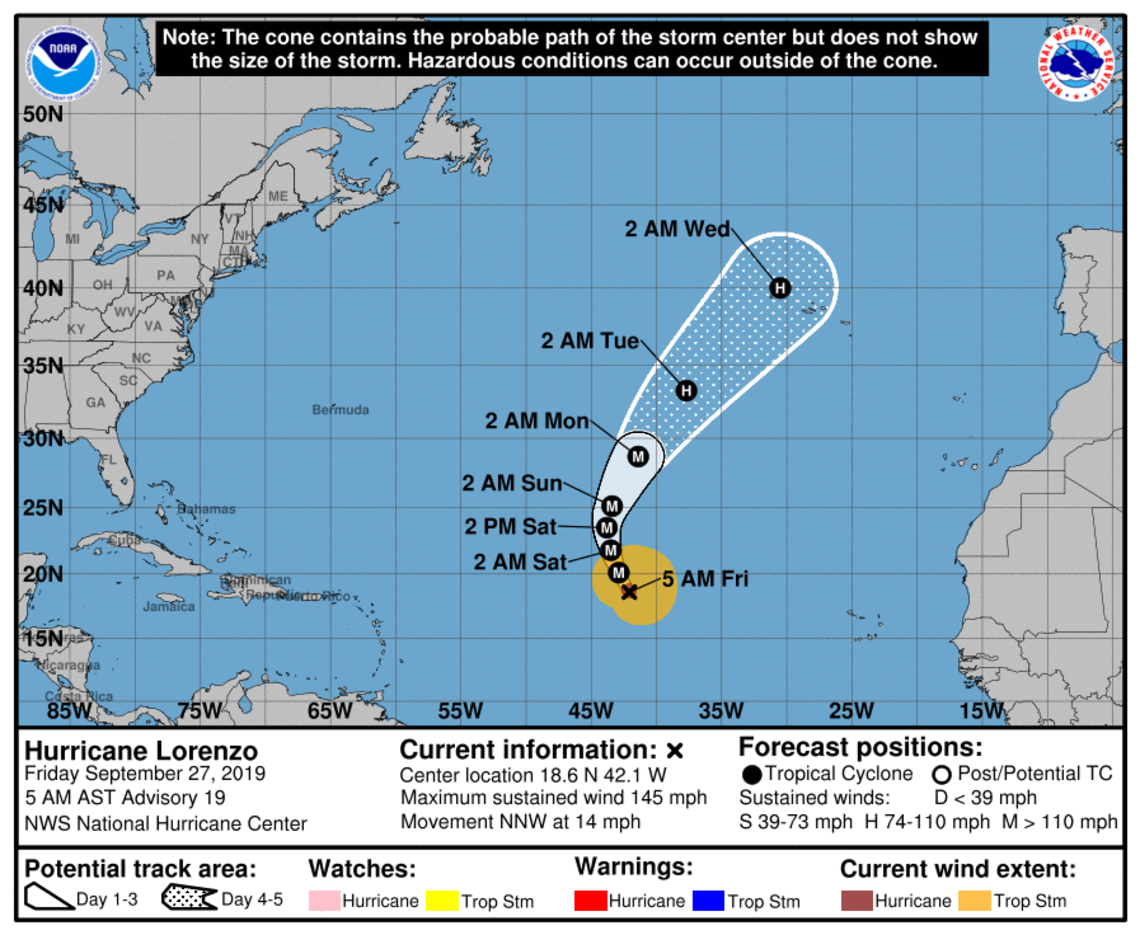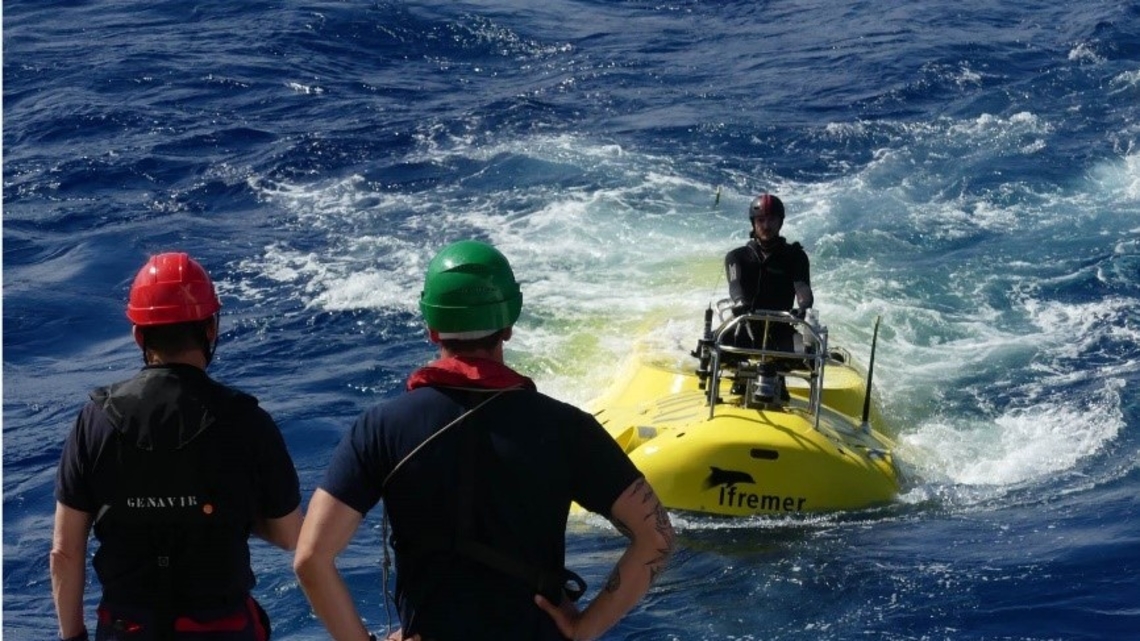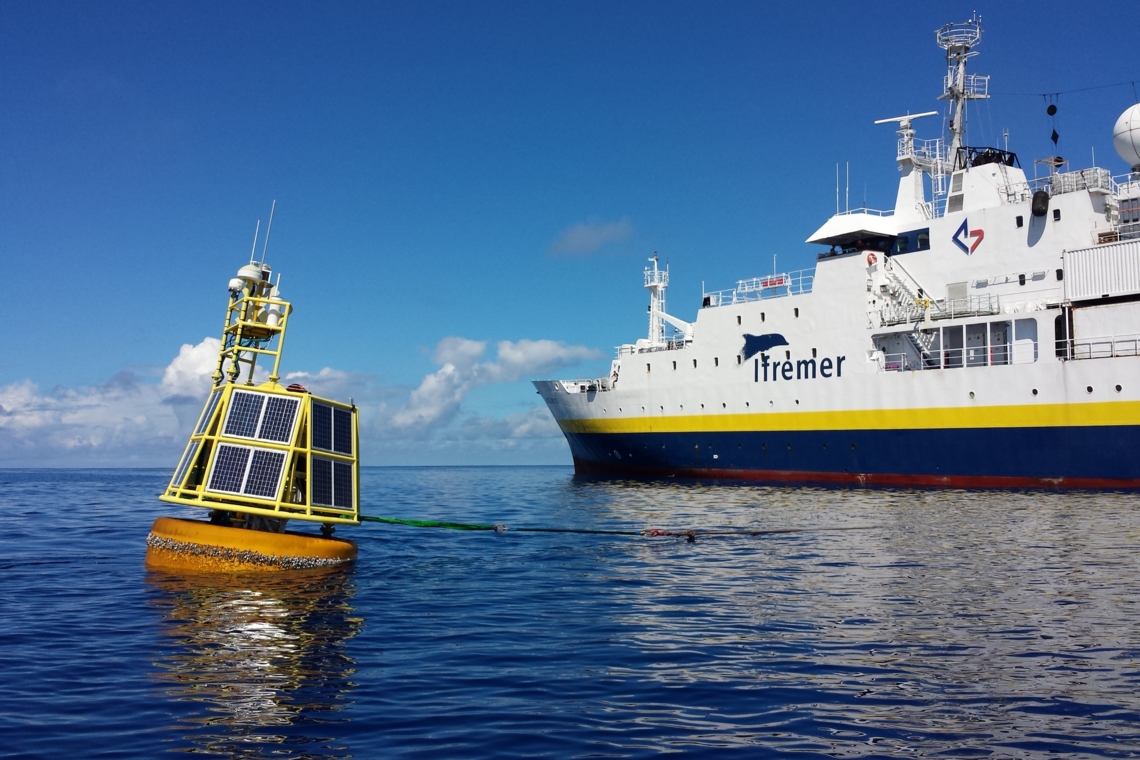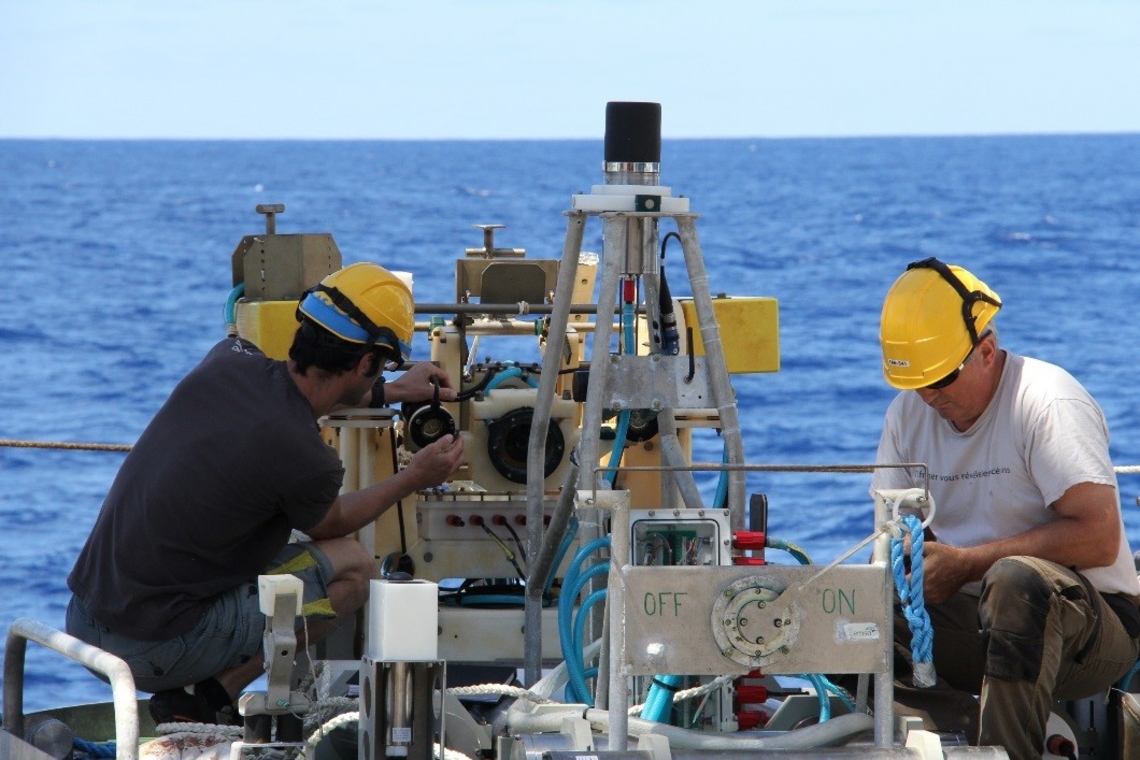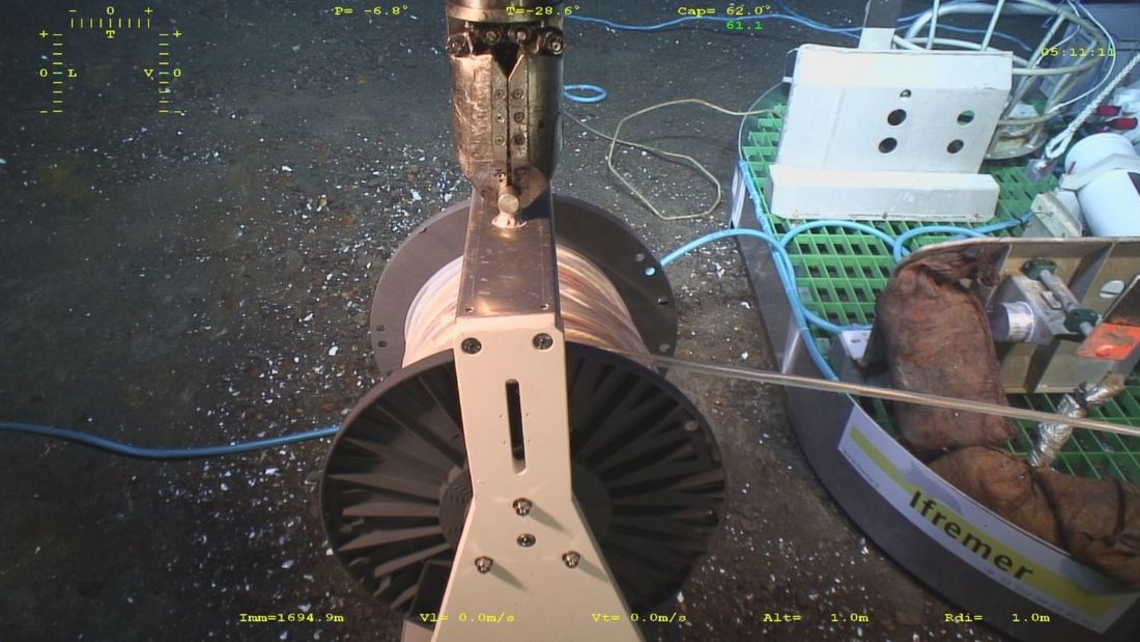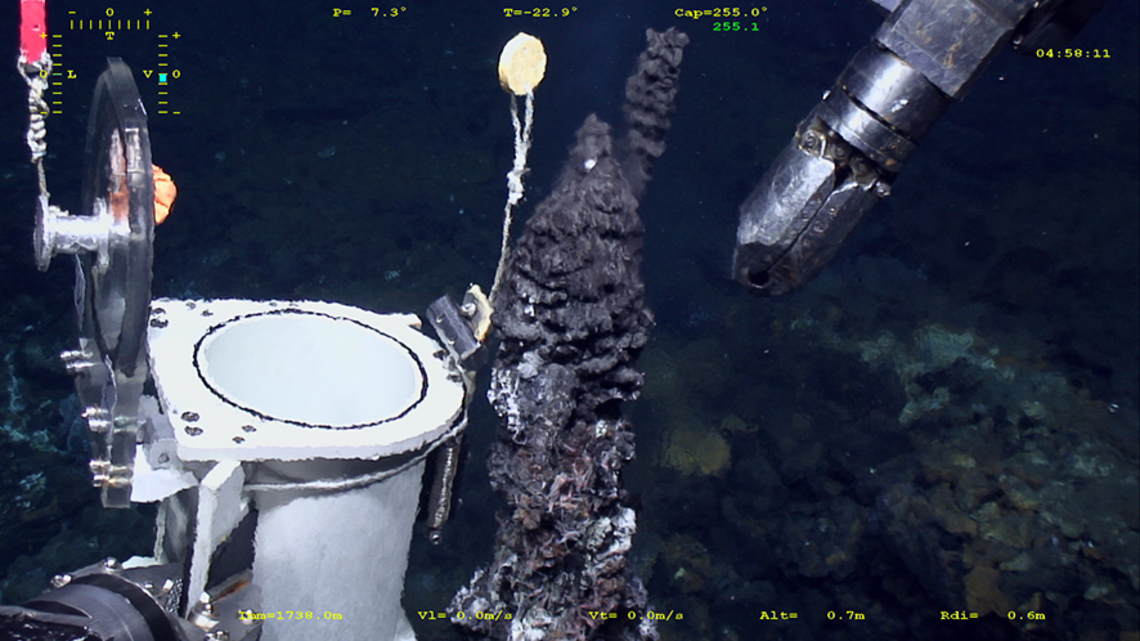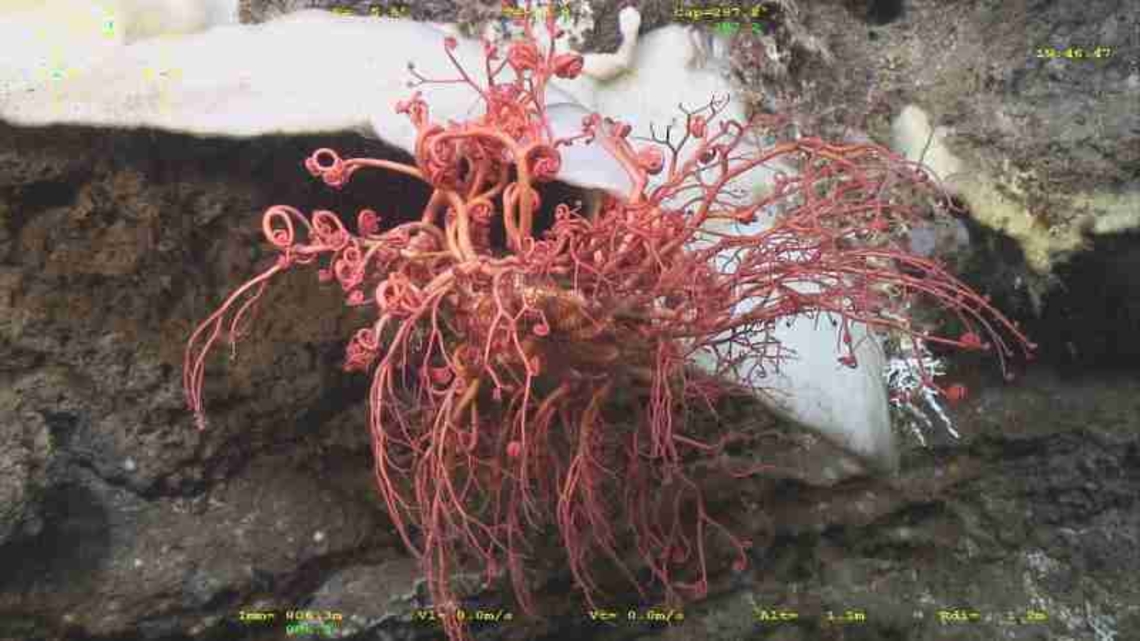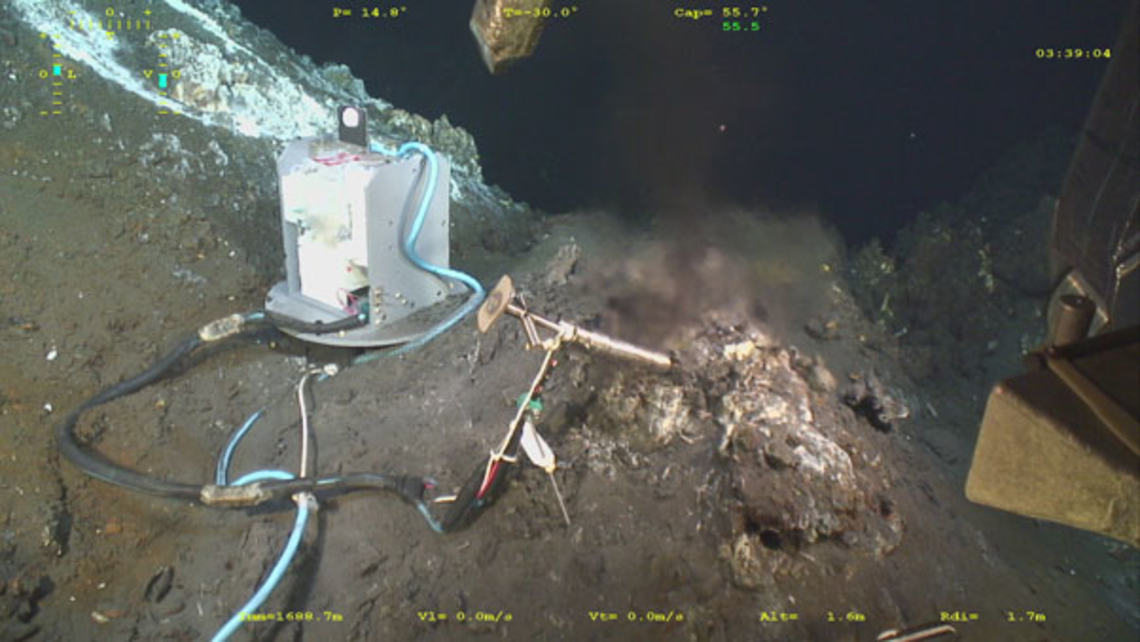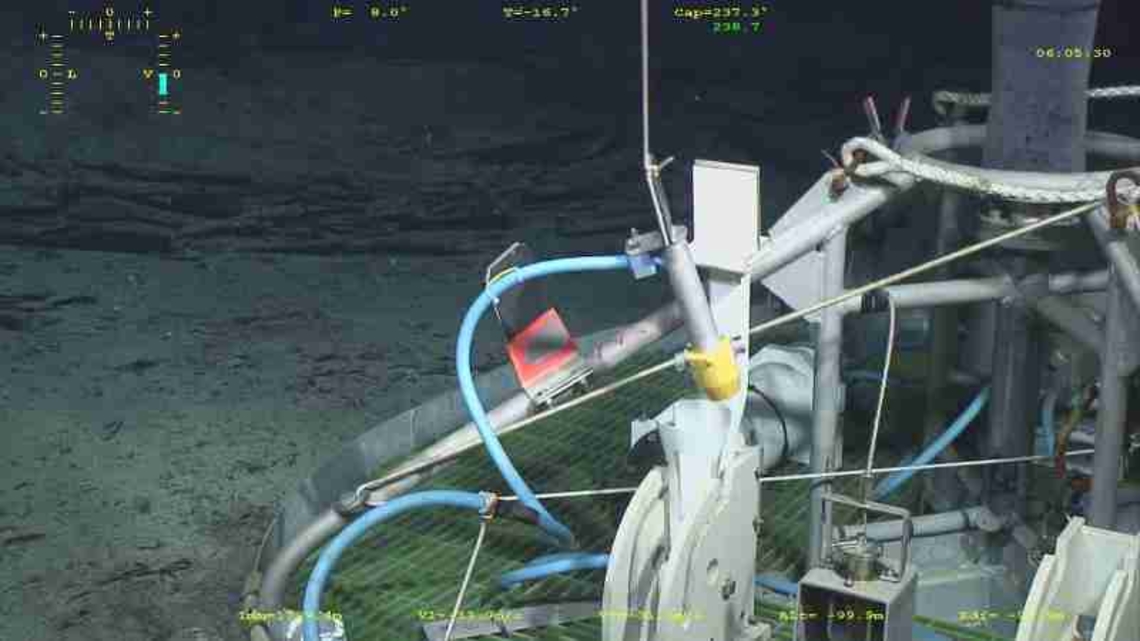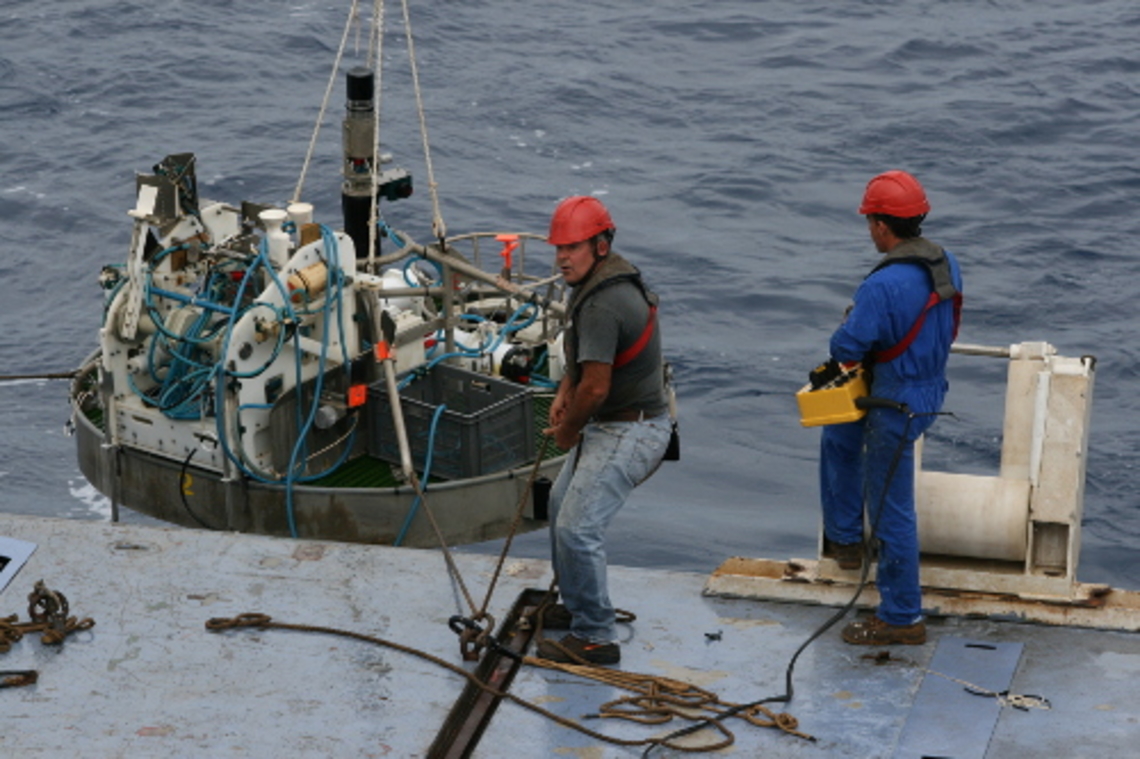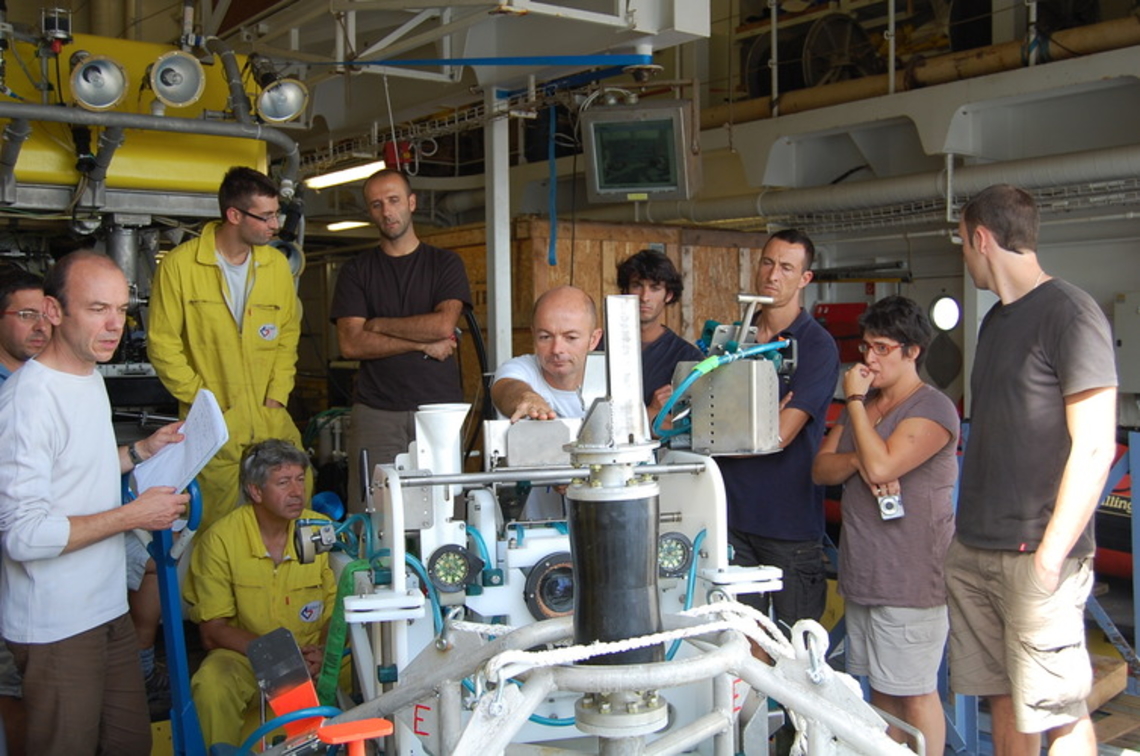EMSO-Azores, maintenance cruises
MoMARsat 2024, 4th to 24th August 2024
The cruise was held on the R/V L'Atalante with the ROV Victor6000. Beside the maintenance of the observatory, the team collected samples of rocks, fluids, fauna, microorganisms and carried out the acquisition of imaging transects on targeted sites allowing the multi-year monitoring of the ecosystem and complete the infrastructure data. This year, imagery surveys were conducted to map geological and biological features as well as scientific gears and dead weights at the vent field scale. These maps will be shared with the Azoreans government to inform marine protected area management (PROTECT project). A program of 10 dives totalizing over 230 hours of bottom time! Learn more... MATABOS Marjolaine, SARRADIN Pierre-Marie (2024) MoMARSAT2024 cruise, RV L'Atalante, https://doi.org/10.17600/18003300 Visit the Facebook pages was dedicated to the cruise https://www.facebook.com/CampagneMomarsat/ |
MoMARsat 2023, 11th to 29th July 2023
Because it is ageing, the BOREL surface buoy was removed to be redesigned and rebuilt in the coming years. The oceanographic mooring was also temporarily removed. And a big success, the DEAFS hot temperature fluid sampler collected all year round and came back onboard with the full set of syringes filled! Despite delayed departure of the ship, numerous breakdowns and technical issues, all the objectives were achieved. The adaptability, support and flexibility of all the teams and of the ship crew were essential to cope the continuously changing program and achieve this annual maintenance. Learn More... MATABOS Marjolaine (2023) MoMARSAT2023 cruise, RV L'Atalante, https://doi.org/10.17600/18002419 Matabos Marjolaine (2023). Compte-rendu opérationnel de la campagne MOMARSAT 2023. Zone de travail Lucky Strike. Infrastructure de Recherche EMSO AÇORES. Navire L'ATALANTE, Submersible VICTOR6000. |
MoMARsat 2022, 6th June (Ponta Delgada) to 27th June (Horta)
MoMARsat2022 was held onboard the French research vessel Pourquoi pas? The team of 30 scientists from Ifremer, CNRS (IPGP, GET, MIO, LPO), University of Western Brittany (UBO) and University of the Azores worked together during the 15 Nautile dives to achieve the substantial sampling plan paramount to the long-term monitoring of the vent field. In order to reduce our environmental footprint on the seafloor and limit the amount of weights left at the bottom, in collaboration with the submersible and ship crews, we experimented a new procedure to deploy the equipement using the deep-sea cable. In addition, one dive was dedicated to the recovery of lost weights. The presence of a cartoonist on board all along the cruise contributed to reinforce the synergy between all the people onboard. Through a hundreds of illustrations, Damien Roudeau described and shared the adventure of scientists, pilots and crew members working together towards a common objective: enhance our knowledge about deep-sea ecosystems. Learn More... SARRADIN Pierre-Marie, MATABOS Marjolaine (2022) MOMARSAT2022 cruise, RV Pourquoi pas ?, https://doi.org/10.17600/18001914 Sarradin Pierre-Marie, Matabos Marjolaine (2022). Compte-rendu opérationnel de la campagne Momarsat 2022. Zone de travail - Lucky Strike infrastructure de recherche, EMSO-Açores, Navire Pourquoi Pas ?, Submersible Nautile. https://doi.org/10.13155/91810 |
MoMARsat 2021, 15th May to 21th June 2021
Learn more... MATABOS Marjolaine, SARRAZIN Jozée (2021) MOMARSAT2021 cruise, RV L'Atalante, https://doi.org/10.17600/18001296 |
MoMARsat 2020, 3rd September (Toulon) to 9th October (Toulon)
10 years already for EMSO-Azores! In 2020, the maintenance cruise on EMSO-Azores was special in many ways… MOMARsat 2020 was the first oceanographic cruise of the French fleet that occurs post-confinement. The scientific team spent 7 days in strict confinement before boarding the RV Pourquoi Pas? on August 27 in Toulon, France. After a long journey, they reached the Azores Islands on Sunday the 13th September. The EMSO Azores observatory has been operating for 10 years. To celebrate, the engineers and scientists will share a selection of 10 ground breaking results:
Learn more... SARRADIN Pierre-Marie, LEGRAND Julien (2020) MOMARSAT2020 cruise, RV Pourquoi pas ?, https://doi.org/10.17600/18000684 |
21th February 2020
On February the 21th, the EMSO-Azores relay buoy started drifting and communication with the seabed stations stopped. The recovery was organized quickly with our colleagues from IMAR (Portugal) Learn more... |
1st Octobre 2019, Hurricane Lorenzo passed over the Azores
October the 1st, the hurricane Lorenzo was expected on EMSO Azores during the night with 52 nds sustained wind, gulf up to 84 nds and waves up to 14 meter high. Indeed, at 02h10TU, the anemometer of the surface buoy recorded 51,2 nds average over 10 minutes just before breaking down. The mooring line withstood the huge efforts and despite the severe weather condition, the data transfert to the shore kept up normally. |
MoMARsat 2019, 11th June (Horta) to 3rd July (Horta)
In 2019, the maintenance cruise took place on board the RV PP? and for the first time, the under-water operations were performed with the inhabited submersible Nautile. The 35 scientists, engineers and technicians (IFREMER, CNRS, UBO, IMAR-Pt) worked 24/7. During day time, the dives with the submersible aimed to refurbish the infrastructure, to complete the datasets with in situ measurements, fluid, faunal and microbial samples. The exploration of the turbulence patterns and the geochemical signature of Lucky Strike hydrothermal plume were carried out during night shift. MoMARSAT 2019 was quite successful and totalized 19 dives with the Nautile, over 35 VMP profiles (Vertical Microstructure Profiler) and 49 CTD casts (conductivity and temperature). Learn more... SARRADIN Pierre-Marie, LEGRAND Julien (2019) MOMARSAT2019 cruise, RV Pourquoi pas ? https://doi.org/10.17600/18001110 |
MoMARsat 2018, 8th August (Horta) to 27th August (Horta)
The deployment of the EGIM and DEAFS were successful. The EGIM Essential Ocean Variables (temperature, conductivity, pressure, dissolved O2, turbidity, ocean currents and ocean noise) are available for download. The team had to leave the site knowing that there would be no near real time transmission with SEaMon East. No impact on the data series as the in-situ WIFI connection showed the system working perfectly. Learn more... CANNAT Mathilde (2018) MOMARSAT2018 cruise, RV L'Atalante, https://doi.org/10.17600/18000514 |
MoMARsat 2017, 8th July (Horta) to 28th July (Horta)
In addition to the usual maintenance of the seabed stations and instrumentations, the team recovered FixO3 TransNational Access mooring line, deployed two new instruments (EMSO Generic Instrumental Module propotype and DEAFS) and replaced the relay buoy. The former buoy was succesfully recovered. A very busy three-week cruise aboard the RV Pourquoi Pas?... Learn more... SARRADIN Pierre-Marie, CANNAT Mathilde (2017) MOMARSAT2017 cruise, RV Pourquoi pas ? https://doi.org/10.17600/17000500 |
MoMARsat 2016, 24th August (Horta) to 13th September (Horta)
The team successfully achieved a major upgrade of the observatory. The second generation of electronic core, COSTOF2 replaced the previous equipment. The observing capacity has been doubled and a series of new sensors was deployed: a video camera with improved image quality, a 100 thermistor string, an array of four hydrophones. Thanks to the financial support of FixO3 Trans National Access, “Deepcorr”, a monitoring line dedicated to corrosion experiments was deployed on the site. Learn more... CANNAT Mathilde, SARRADIN Pierre-Marie (2016) MOMARSAT2016 cruise, RV L'Atalante, https://doi.org/10.17600/16001200 |
MoMARsat 2015, 8th April (Horta) to 29th April (Horta)
SARRADIN Pierre-Marie, CANNAT Mathilde (2015) MOMARSAT2015 cruise, RV Pourquoi pas ?, https://doi.org/10.17600/15000200 The videos produced during the submersible dives are available on the Marine science video portal. Blog (French) |
MoMARsat 2014, 13th July (Horta) to 31th July (Horta)
The cruise was carried out on board the RV Pourquoi pas? with ROV Victor for the maintenance and exploration submarine operations. Learn more... SARRADIN Pierre-Marie, CANNAT Mathilde (2014) MOMARSAT2014 cruise, RV Pourquoi pas ? https://doi.org/10.17600/14000300 The videos produced during the submersible dives are available on the Marine science video portal. |
MoMARsat 2013, 23th August (Horta) to 7th September (Horta)
Third annual maintenance operations on the EMSO-Azores observatory with a new sensor deployed on top of a small hydrothermal spire called AISICS chimney: CISICS (Connected In Situ Instrumented Colonizing System) is dedicated to microbial colonization, fluids and microbial sampling and temperature records. Learn more... BLANDIN Jérôme, SARRADIN Pierre-Marie, CANNAT Mathilde (2013) MOMARSAT2013 cruise, RV Pourquoi pas ?, https://doi.org/10.17600/13030040 The videos produced during the submersible dives are available on the Marine science video portal. |
MoMARsat 2012, 10th July (Ponta Delgada) to 27th July (Ponta Delgada)
A specific sampling started this year, focussing on the crab Segonzacia mesatlantica and the shrimps Mirocaris fortunate: specimens will be maintained alive in pressurized aquaria and provided to Oceanopolis in Brest for the "Abyss box" exhibition (collaboration between Oceanopolis, Univ. Paris Sorbonne (UPMC) and Ifremer, involving IMAR DOP). Learn more... CANNAT Mathilde, SARRADIN Pierre-Marie (2012) MOMARSAT2012 cruise, RV Thalassa, https://doi.org/10.17600/12040050 The videos produced during the submersible dives are available on the Marine science video portal. |
MoMARsat 2011, 28th June (Horta) to 23th July (Horta)
First maintenance work on the "standalone" observatory EMSO-Azores. EMSO-Azores observatory is to be maintained on a yearly basis during the Momarsat cruise. The observatory components are recovered, serviced on board and redeployed, using a submarine vehicule. Beyond the maintenance work, samplings of rocks, fluids and organisms, the colonization experiments and the video surveys of vents and habitats are performed during the cruise. They provide critical background to the time-series acquired over the year: contribution to the data quality control, extention of the range of parameters studied and improvement of the spatial resolution. Learn more... CANNAT Mathilde, BLANDIN Jérôme, SARRADIN Pierre-Marie (2011) MOMARSAT2011 cruise, RV Pourquoi pas ?, https://doi.org/10.17600/11030070 The videos produced during the submersible dives are available on the Marine science video portal. MoMARsat2011 web site (French) |
MoMARsat 2010, 2d October (Horta) to 16th October (Horta)
Led jointly by Ifremer and the IPGP-CNRS/INSU, the research cruise MoMARsat2010 aboard the RV Pourquoi pas? aimes to deploy an array of oceanographic instruments which will continuously monitor the active hydrothermal processes on the Lucky Strike vent field. The site is located on the Mid-Atlantic Ridge offshore the Azores, in the center of one of the most volcanically active segment of the ridge. This monitoring offers a high probability of capturing evidence for volcanic events, observing interactions between faulting, magmatism, hydrothermal circulations and, evaluating their impacts on the ecosystem. MoMARsat2010 is one of the demonstration missions of the European ESONET programme that is developing a network of deep-sea observatories. Learn more... SARRADIN Pierre-Marie, BLANDIN Jérôme, ESCARTIN Javier (2010) MOMARSAT2010 cruise, RV Pourquoi pas ?, https://doi.org/10.17600/10030100 |

